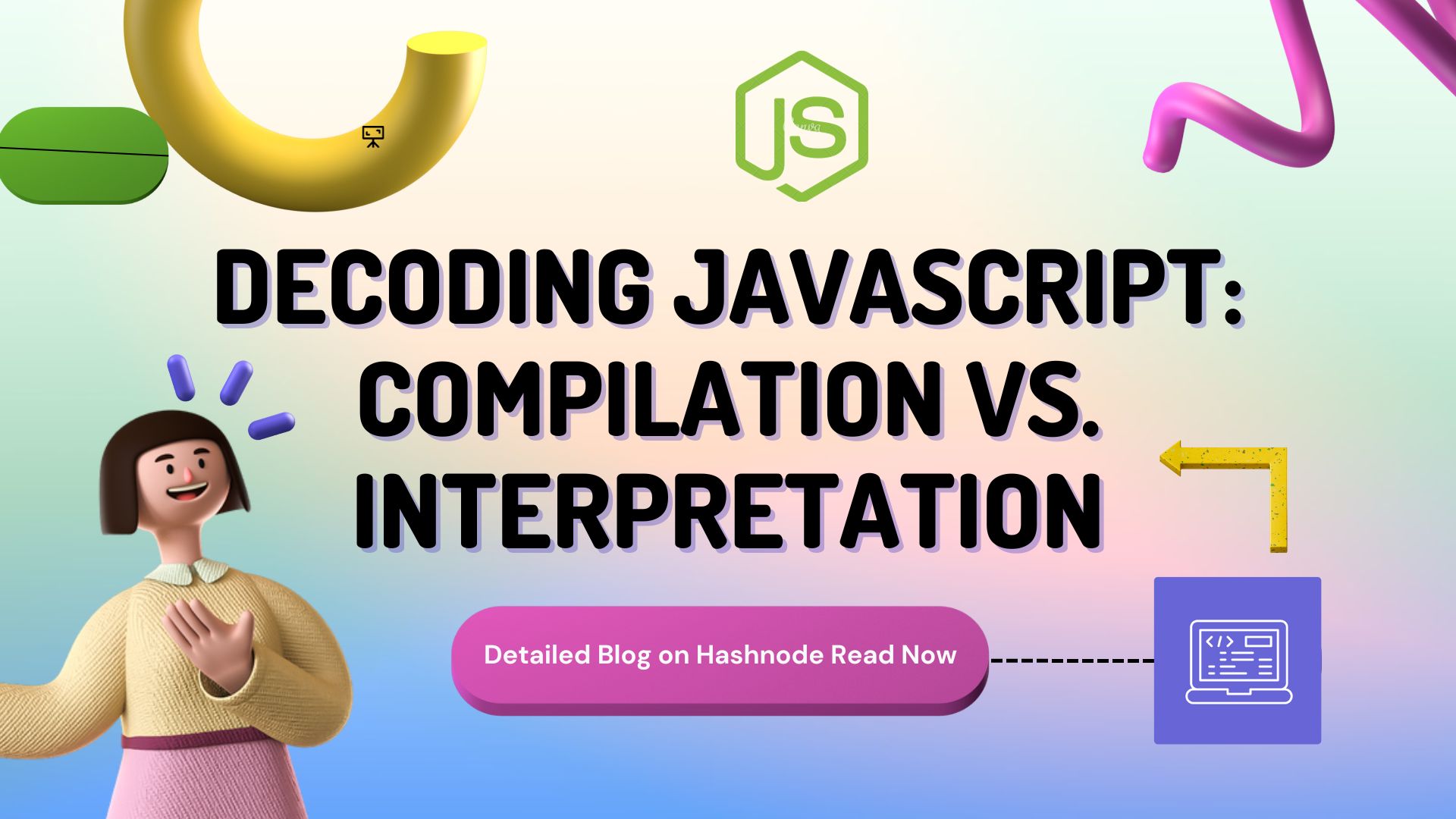Decoding JavaScript: Compilation vs. Interpretation and Their Impact on Execution.
 Aman Mishra
Aman Mishra
Introduction: JavaScript, as a versatile and ubiquitous programming language, has gained immense popularity in web development. Understanding how JavaScript code is executed involves delving into the concepts of compilation and interpretation. In this blog, we will explore how JavaScript combines both compilation and interpretation, shedding light on the intricacies of its execution process.
Compilation in JavaScript: JavaScript is often referred to as an interpreted language, but the reality is more nuanced. While the JavaScript engine does perform interpretation, it also involves a compilation step. Let's break down the compilation process in JavaScript:
Parsing: The JavaScript engine parses the source code to create an Abstract Syntax Tree (AST). This tree represents the syntactic structure of the code.
Compilation to Bytecode: The engine translates the AST into an intermediate representation known as bytecode. This bytecode is not machine code but a lower-level representation that is closer to the machine's native language.
Optimizations: The JavaScript engine applies various optimizations to the bytecode. This may include inlining functions, constant folding, and other techniques to enhance performance.
Execution: The optimized bytecode is executed by the JavaScript engine.
Interpretation in JavaScript: While there is a compilation step, JavaScript is fundamentally an interpreted language. The engine doesn't produce a standalone executable file but interprets the bytecode at runtime. This involves translating the bytecode into machine code on-the-fly. Let's explore the interpretation process:
Execution: The JavaScript engine interprets the bytecode line by line during execution.
Just-In-Time (JIT) Compilation: To further boost performance, many modern JavaScript engines use JIT compilation. This involves translating frequently executed parts of the bytecode into native machine code for faster execution.
Advantages of Compilation and Interpretation in JavaScript:
Portability: Interpretation allows for platform independence, making JavaScript suitable for various environments.
Optimization Opportunities: Compilation to bytecode and subsequent JIT compilation enable the JavaScript engine to apply optimizations, enhancing performance.
Dynamic Features: Interpretation facilitates dynamic features in JavaScript, such as runtime code evaluation and dynamic typing.
Conclusion: In the JavaScript ecosystem, the marriage of compilation and interpretation is crucial for achieving a balance between performance and flexibility. Understanding this intricate dance empowers developers to write efficient and portable code while leveraging the dynamic nature of JavaScript for web development. As the JavaScript landscape continues to evolve, so too will the optimizations and techniques employed by JavaScript engines, further shaping the interplay between compilation and interpretation.
Subscribe to my newsletter
Read articles from Aman Mishra directly inside your inbox. Subscribe to the newsletter, and don't miss out.
Written by

Aman Mishra
Aman Mishra
🧠Data Structures and Algorithms | Python | Java | FullStack Development | Open Source